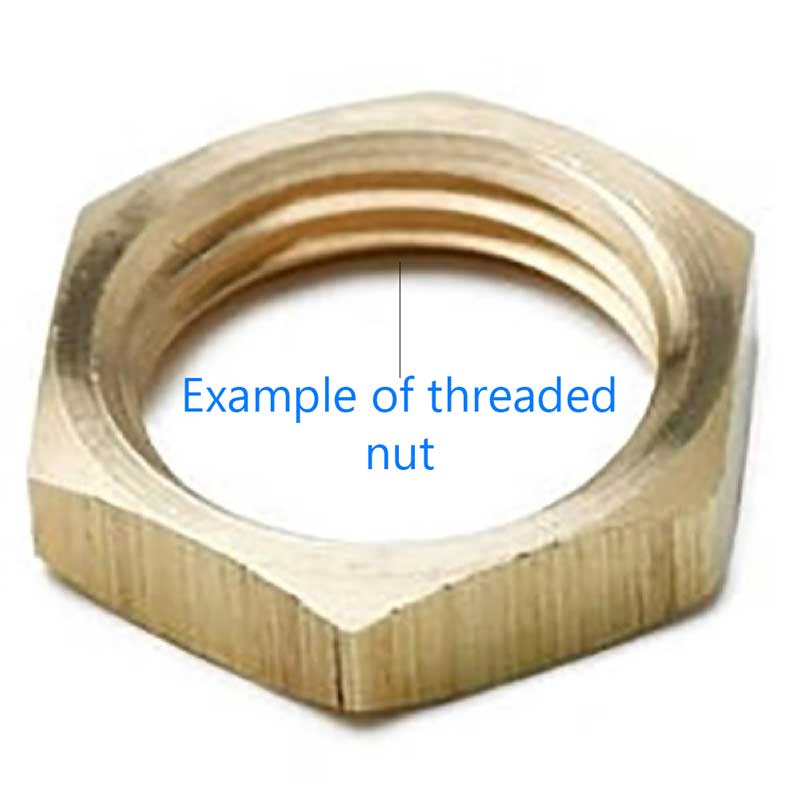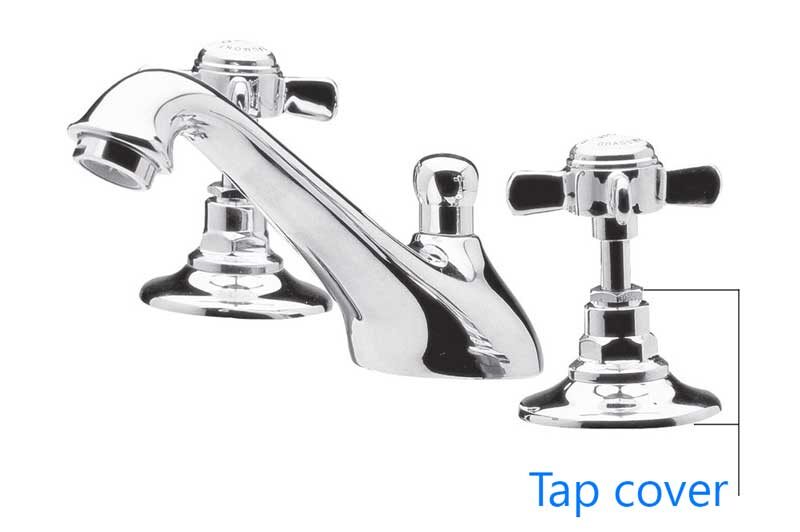Are you looking to make a change to your existing taps? Perhaps you want to create a new style, or maybe you require a change due to wear and tear. Bathroom taps are a staple feature for baths and sinks, so use our guide below and find out how to change yours with complete confidence.
Table of contents
How to change bathroom taps
Changing a bathroom tap doesn’t have to be a nightmare experience. In fact, with the right know-how, you can change your taps with some simple steps. That’s why we’ve created some guidelines to help you.
How to change bathroom sink taps
You’ve chosen new taps for a bathroom sink; now it’s time to fit them into your basin!
Step one: Turn off the water at the mains supply for both hot and cold water. Run the taps in the house to drain any water left in the system. Confirm the mains supply is off and leave all taps in the ‘open’ position across the property.
Important: Leaving the taps in the ‘off’ position can risk damaging them when turning the water supply back on after installing the new taps. This is because the air left in the system will typically come out first, followed by the water through the pipes and taps. The force from the pushed-out air can cause damage. So, ensure all taps, including the new ones after installation, are left in the ‘open’ position before turning the water supply back on.
Step two: Go under the basin and, using a wrench, unscrew the nut(s) holding the basin to the tap. Once this is done, you can gently lift and move the tap off of the basin. Check that it is separate from the pipe system too.
Note: If there is any old adhesive or dirt or your pipe system is grimy, give this area a clean, remove any excess muck and ensure there is no damage on the fittings your new tap is going to be attached to.
Step three: Take your new tap and connect the threaded bar to it. Feed this through the basin hole so that the tap sits on the top of the basin with the thread sticking out below the basin. If your new tap includes a washer, use this to get the tap sitting in place well (if this wasn’t part of the kit then you may need to buy the washer separately). Now put a nut onto the threaded bar to secure the new tap to the basin.
Note: If there are any issues with the fittings connecting to the old pipework, then you’ll need an adaptor. Fittings manufactured with plastic might need a connector, and monobloc (one spout) taps will need a reducing coupler.

Step four: Take your flexible connectors and screw this into your tap on one end. With the copper piping system on the other, add a compression fitting in between. Compression fittings can help regulate the pressure between the two pipes which is safer than leaving them to run at random, so it’s advised to fit them where possible. After this, your tap should be well secured to your basin with the hot and cold pipes connecting from the wall to the new pipes.
Step five: Make your final checks for issues such as damages, leaks or loose connecting sections. Once this has been completed, leave the new tap in the ‘open’ position as you did before with the other taps and then turn the water supply back on at the mains.
If the stream of water is nice and steady, with both hot and cold working as needed, then there you have it, a newly fitted basin tap!
How to change bath taps
Time for some new bath filler taps! Here’s how you can install them in your bath.
Step one: Unlike basin taps, bath water suppliers can be isolated using a flathead screwdriver to turn off the hot and cold taps at the compression fittings. However, if the system does not have compression fittings, turn off the water supply at the mains and leave all taps ‘open’.
Step two: Look under the bathtub (if there is a panel covering the system, then remove this for the installation). You should be able to see two flexible tap connectors leading from the internal plumbing in the wall to the tap. Disconnect them with an adjustable wrench and remove the tap accordingly by loosening and removing the nut from below the tap. Remove the washer, and the tap should easily lift away from its placement.
Note: If you plan to replace the connectors, remove them from the wall and compression fitting (if applicable) and the body of the tap. Use an old towel or cloth to wipe up any excess after removing the connector as there may be trapped water where the connector and bottom of the tap attach.
Step three: Clean away any surface dirt: this can be done with a wet cloth, before fitting your new tap(s) in the clean hole(s). Secure it with a washer and nut to create a watertight seal.
Step four: Make sure your taps are left open, then check everything is secure with no loose or leaking sections after you’ve turned the water back on.
There’s your brand new bath tap!
How to remove a tap head with no screws
If you find yourself with a tap system that doesn’t have any screws securing it to the basin or bath (e.g., grub screws), here’s how you can remove it.
Step one: Turn off the water at the taps, drain the taps of all water and leave them ‘open’.
Step two: With no screws, your tap or taps are likely to be the type that unscrews from the tap cover (aka the hood). Some are easy to twist off, but you might find that yours are fitted tightly in place. Once you’ve twisted the cover, ‘open’ the tap until it can ‘open’ no further. You can now continue to twist the cover until it is loose.
Tip: If the hood is difficult to twist off, cover the tap using a cloth to protect the finish and use pliers to help loosen it.
Step three: You should now be able to see the nut beneath the cover and easily fit your wrench around it to begin the removal. If tight, use your pliers to hold the bottom of the tap beneath the basin. You should now be able to remove your tap(s) easily.
Step four: If there is existing PTFE (Polytetrafluoroethylene), also known as plumbers tape or Teflon, around the bottom of the tap that’s in poor condition, it’s advised to replace this with a new Teflon. Wrap it around at least five times, in the same direction that the tap will be fitted. If the washer needs replacing, do so as needed.
Step five: Reinstall the tap, ensuring all sections are tightly fitted to avoid any leaking. Leave the taps ‘open’ to make certain they run smoothly and check beneath the basin so that you can be satisfied no leaks are coming from the main section of the piping system.
There’s your guide to unscrewing taps with no screws!

If you are still unsure about any of the fitting processes, please seek professional advice from a plumber or trade manufacturer.
Did you happen to find a leaking copper pipe? Check out our guide on how to repair a leaking copper pipe to help you take care of that issue as soon as possible.




















